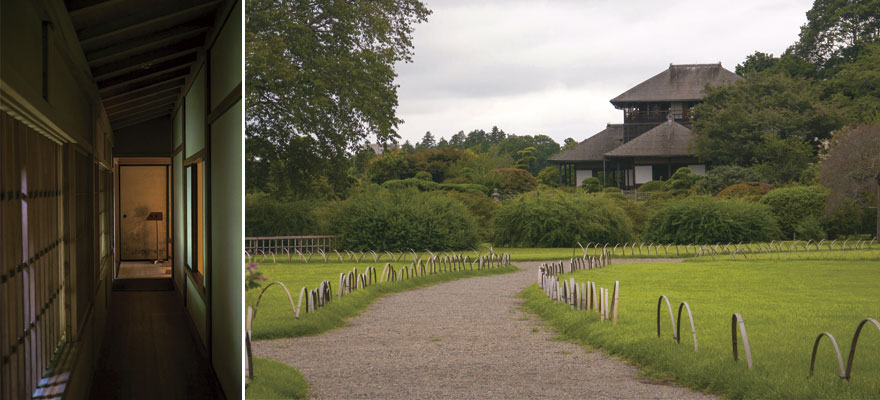Home > Highlighting JAPAN > Highlighting Japan October 2013 >Japanese Globalization
Highlighting JAPAN
47 Prefectures from A to Y
IBARAKI
Great Garden and Onsen, Verdant Greenery

BOARD the Joban Line limited express train from Ueno Station (Tokyo) bound for Iwaki and in an hour you'll arrive at Mito City, the capital of Ibaraki Prefecture.
Mito is home to one of the three "Great Gardens of Japan" (Nihon Koen), Kairakuen. In Japanese, Kairakuen means 'garden that can be enjoyed by everyone' and as the name suggests, it was open to all who wished to use it. Kairakuen was established in 1842 by Nariaki Tokugawa and even though much time has passed since then, the gardens are still enjoyed by over a million visitors a year. Kairakuen is a place of striking beauty and serenity.
The garden boasts a staggering 3,000 plum trees of 100 different varieties. Between February 20 and March 31, the park hosts an annual plum blossom festival which sees the landscape transformed into a cloud of delicate white and pink hues. There are many other tree species, each with their own dedicated areas in the park. Entry to the park is free, and it is open all year-round.
For a small entry fee, visitors can also see Kobun-tei that functioned as Nariaki's private and public villa, overlooking the gardens. While it's currently being repaired after the Great East Japan Earthquake, visitors can also visit the Kodokan, which is a place of study and training attached to the gardens. Nariaki upheld the vision that training and study would be performed at the Kodokan, followed by relaxation and contemplation in Kairakuen.
For a change of pace, take the JR Suigun line out of Mito for an hour and 10 minutes, and you will eventually arrive at Fukuroda Station. From there, it's a short bus ride to the spectacular Fukuroda-no-taki waterfalls. Three small tributaries merge in the hills above the falls and flow over the staggered cliff. The falls crash down 120 meters of terraced rock in an awe-inspiring spectacle of beauty and sound. Fukuroda-no-taki is open all year.
In autumn, the greenery gives way to rich reds and browns as the leaves change. From November through February, the falls are illuminated in the evenings on weekends. At the height of winter, the falls completely freeze over, turning the cliff face into a wall of ice. Spring brings with it wild cherry blossoms dotted across the landscape. During summer, the cooler mountain air and nearby festivals make the area an attractive destination for campers.
The Fukuroda area also boasts a number of hot springs. Some 850 years ago, the area was predominantly used for rice farming. Farmers noticed that the ground water in their paddies was heated and would often use their paddies to soak away the day's tension. Established 15 years ago, Sekisho-no-Yu, now provides similar relief to travelers. The waters remain undiluted to preserve the healing properties of the minerals therein. Sekisho-no-Yu also has a restaurant with an exquisite menu. All the ingredients are local. There is also a selection of locally produced juices, micro-brews and yogurts to sate parched palates.
With its rich cultural and natural heritage, as well as its convenient location, Ibaraki is ideal for travelers seeking to escape the urban intensity of the city. If you need to recharge and relax, Kairakuen and the Fukuroda area are definitely worth a look.
© 2009 Cabinet Office, Government of Japan






